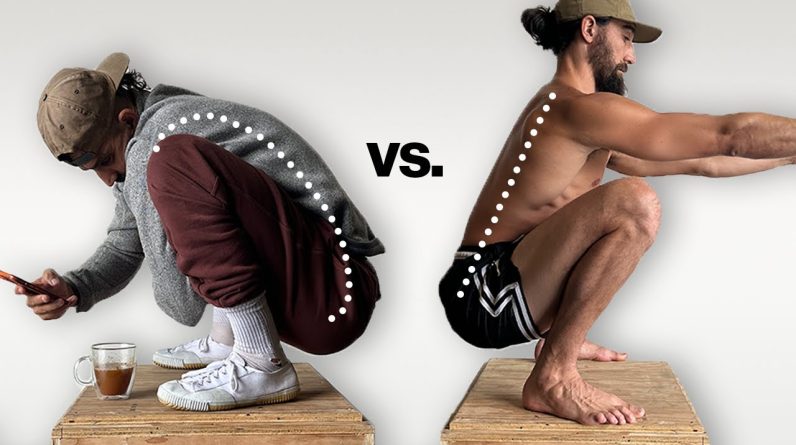
Fantastic article by Chad Waterbury on full body workouts. I’ve been following Chad for a number of years now and he is by far the best out there. He is the smartest most innovative trainer when it comes to performance training. Take a look at component 1 of this 2 component series on why you should be performing full body workouts.
By: Chad Waterbury
Training your entire body, each time you suit up for a workout, is the most effective way for 99% of lifters to gain muscle mass. I cant make it any simpler than that. Full body training (aka total body training) is as well-liked as ever simply because thats what the vast majority of lifters out there need.
Ive written countless articles and 3 books that revolve around full body training: Muscle Revolution, Huge in a Hurry, and Body of F.I.R.E. Actually, if you do a Google search for full body training or total body training, the T-nation article I wrote a couple of years back on the subject is the initial to come up. (Out of 67,300,000 possible outcomes.)
Its safe to say that my name is synonymous with the full body training philosophy, yet I still get frequent emails from avid lifters who want to try it but do not know how to set up an efficient plan.
So thats why I decided to write this post. With the following info youll have all the tools you need to make full body training work for you.
First, let me explain why this kind of training works so well. You will find 3 reasons: exercise selection, hormonal response, and frequency.
Exercise Selection: when you train every thing in one workout you should be wise with the exercises you choose. Of all the variables that make or break your muscle-gaining efforts, exercise selection is number 1. Any body component split can be efficient if its comprised of compound exercises. However, when you target particular muscle groups with body part split training you invariably do a bunch of isolation exercises that have little to no impact on adding muscle to your frame. With full body training, theres no time to mess with concentration curls, kickbacks, and a host of other subpar exercises. By default, full body training steers you to compound exercises that give you the most bang for your buck.
Hormonal Response: 3 of probably the most essential hormones for building muscle are testosterone, insulin-like growth factor (IGF-1), and growth hormone. Study shows that growth hormone will increase after an intense bout of exercise. And when growth hormone increases it signals the body to produce more IGF-1, a powerful anabolic hormone. Research also shows that working the largest muscle groups outcomes within the highest output of growth hormone. A full body workout creates an intense demand for your body to upregulate anabolic hormones – considerably higher than workouts that only work a couple of muscle groups (eg, arms and shoulders).
Via research, its been shown that the amount of muscle mass stimulated in a workout is proportionate to the amount of testosterone thats released. Put merely, workouts that stimulate the most muscles produce the most testosterone. Ill concede that the relationship between strength training and the impact it has on testosterone is still a little fuzzy, but my empirical data (and typical sense) tells us that full body workouts augment testosterone much better than a day of arm training.
Frequency: no 1 would argue against the principle that training a muscle group more often results in faster muscle gains (supplied you can recover between the workouts). With full body training, every of the primary muscle groups are stimulated at least 3 times per week, as opposed to a body part split that only hits every thing once per week (yes, theres some carryover between a chest/back and arms/shoulders workouts, but you get the point). Make no mistake about it: training much more frequently is the key to building muscle fast.
Nevertheless, you cant just train everything three times per week and recover from those workouts unless you follow these steps.
Step #1: Begin with three exercises in 1 workout. One of the problems lifters run into when they embark on a full body training plan is they try to do too numerous exercises in 1 workout. For a workout to be full body, it only has to consist of an upper body pull, an upper body push, and a squat, deadlift or lunge variation. Here are two examples of a full body workout:
Full body workout Example 1
1A Chin-up
1B Dip
1C Deadlift
Full body workout Example 2
1A One-arm dumbbell row
1B One-arm shoulder press
1C Reverse lunge
As you are able to see, a full body workout can consist of single-limb exercises, too. Full body training is not just about bent-over rows, push presses, and squats. You will find countless exercise variations you can use within the workouts. Later on Ill tell you how to add much more exercises to a full body workout in order to target lagging muscle groups. But for the initial few weeks, start with 3 exercises per workout to get your body accustomed to this type of training.
Step #2: Perform a various exercise for each workout throughout the week. This is where lifters frequently get tripped up. If you attempt to do a full body workout that consists of the chin-up/dip/deadlift circuit 3 times per week youll get overtrained in no time. Each workout throughout the week should consist of various variations of an upper body pull, upper body push, and squat, deadlift or lunge variation. Heres a sample weekly workout plan.
Monday
1A Chin-up
1B Dip
1C Deadlift
Wednesday
1A One-arm row
1B One-arm shoulder press
1C Reverse lunge
Friday
1A Pull-up with a narrow grip
1B Decline dumbbell bench press
1C Front squat
Now you’ve a weekly workout plan that consists of different exercises in each workout. Repeat this plan for 6 weeks, and then pick new exercises. The exercises for your next 6-week phase do not have to be drastically various. Merely switching from dumbbells to a barbell or kettlebells will do the trick. For example, you could do the front squat with a barbell for 6 weeks, and then do a front squat while holding two kettlebells for the next 6 weeks. Or you could do a completely different exercise. Its up to you and also the equipment thats available.
Step #3: Use a various rep scheme with each workout throughout the week. Full body workouts are demanding and theyll push your limits of recovery if youre not used to them. Therefore, one simple trick to help your body recover would be to use a different number of reps per set in every workout. This, by the way, is just an additional way of telling you to vary the load throughout the week. You cant use the exact same weight for a set of 10 as you use for a set of 3 reps. This is a great thing since various loads have a various impact on your nervous system. Its easier for your nervous system to recover from three different loads throughout the week than it is for a constant load, especially if its heavy.
So lets construct on the sample full body training plan we already have and add in the set/rep parameters.
Monday
Sets x Reps: 83
1A Chin-up
1B Dip
1C Deadlift
Wednesday
Sets x Reps: 55
1A One-arm row
1B One-arm shoulder press
1C Reverse lunge
Friday
Sets x Reps: 410
1A Pull-up with a narrow grip
1B Decline dumbbell bench press
1C Front squat
Now you’ve a weekly plan that consists of different exercises and different loads (reps) in every workout throughout the week. This is how you can make full body training work for natural guys who have a limited capacity to recover. Ive never worked with a client who couldnt recover from the above program, provided their nutrition and sleep are in order.
Heres an additional trick if youre really limited by the number of exercises you can do. Start by setting up a weekly plan that consists of the exercises that suit your available equipment. Use the same set/rep parameters I listed above. Do that plan for 6 weeks. Then, when the 6 weeks are up you are able to alter the weekly plan by simply moving around the set/rep parameters from one workout to another. Heres what I mean.
Monday
Sets x Reps: 83
1A Pull-up with a narrow grip
1B Decline dumbbell bench press
1C Front squat
Wednesday
Sets x Reps: 55
1A Chin-up
1B Dip
1C Deadlift
Friday
Sets x Reps: 410
1A One-arm row
1B One-arm shoulder press
1C Reverse lunge
Now you’ve a entire new program to do for an additional 6 weeks while utilizing the same exercises you did within the first phase.
In component II Ill explain how you can modify a full body workout to burn fat, construct strength, or bring up a lagging body component.
Stay focused,
CW






